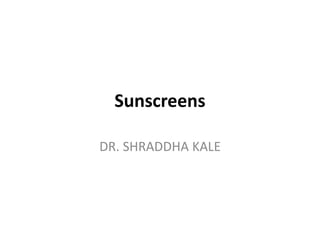This document discusses sunscreens and sun protection. It defines sunscreens as agents that alter the effects of UV radiation on skin by absorbing or reflecting incident radiation. It describes the different types of sunscreens including chemical and physical (inorganic) varieties. Key factors discussed include SPF, UVA protection, formulations, and instructions for proper application and sun avoidance. The document provides a comprehensive overview of sunscreen ingredients, testing methods, and recommendations for sun protection.





















































